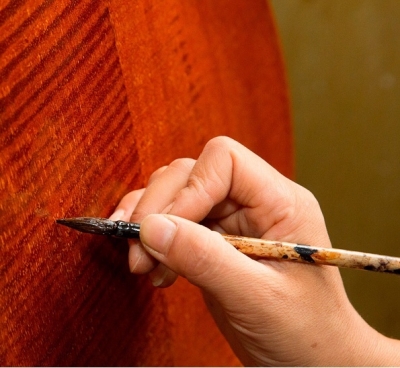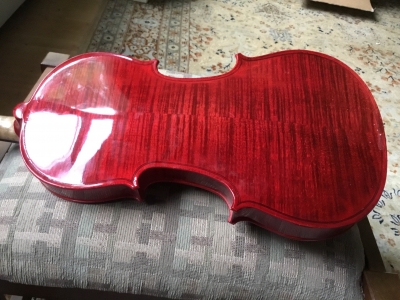Welcome to our forum. A Message To Our New and Prospective Members . Check out our Forum Rules. Lets keep this forum an enjoyable place to visit.
Currently working on errors from the latest (SimplePress) forum update. Many issues have been resoled and others are being worked on. Thank you for your patience.
 Topic RSS
Topic RSS



 (0 votes)
(0 votes) Regulars
 Offline
Offline

Regulars
 Offline
Offline





Regulars
 Offline
Offline

Regulars
 Offline
Offline
Regulars
 Offline
Offline


Regulars
 Offline
Offline

Success is the progressive realisation of a worthy ideal. —Earl Nightingale.
Regulars
 Offline
Offline








Irv - forgot to thank you for bringing attention to this.
I almost suspect the girl in the original photo to be a fake - there are simple ways to reproduce the same effect (using simple tools), for cheaper mass production.
Just the idea that people need to try to fool customers into believing they are NOT purchasing a product made from inferior material makes me sooo mad... but also sad.
Sad because (if that girl truly is painting with a single brush) it would take less time and effort to paint a simple tone-on-tone design or scene & would probably make the instrument worth more - probably worth more hanging on a wall!
I cherish the beauty of natural materials (specially wood) - this kind of deception happens everywhere (jewelry/gemstones, stained glass, clothing, furniture, etc...). Makes it hard for craftsmen/artists working with "the real thing"!
I have strong feelings about when to use a faux finish - there's a fine line between "enhance" and "deceive".
It's only by educating the public that this can stop (which is what you are doing, Irv).
- Emily
Irv, on the cheap violins: are they held together with hide glue?
At one time I had a list from a manufacturer in China showing his violin products. He had about 40 different violin lines that ranged from $10 to $19 depending on the level of completion you required.
My home is not humidity protected. I have problems with projection on some of my violins, but my cheapest one($30) has never had any problems. It is rock solid and I have wondered what glue they had used to put it together.
More recently I bought another cheap ($40) electric violin made with basswood. My first one had the neck come loose and my attempts to fix that did not work well (which included putting a wine cork under the fingerboard to hold it up). On this one the screw that holds the tailpiece strap to the violin crushed the basswood and tilted upwards. I drilled a larger screw hole, packed it with epoxy then screwed in a larger screw. It's held for a week now, but I feel that the basswood is just not strong enough to withstand the pressures the strings create. I am using those "Opera" strings hoping that those have less tension than steel, even though I know that the E string is still steel and has the highest tension.
Regulars


MrYikes said
...the screw that holds the tailpiece strap to the violin crushed the basswood and tilted upwards. I drilled a larger screw hole, packed it with epoxy then screwed in a larger screw. It's held for a week now, but I feel that the basswood is just not strong enough to withstand the pressures the strings create.
If you have room for it in the structure use a nut and bolt (M4 or 6-32UNC) to secure the tailpiece through the main beam of the instrument, perhaps with a repair washer to spread the load on the lower side. Mine uses cooking-quality steel strings straining against just this through yellow pine.
I guess they used basswood because it's so cheap and easy to work. My next solid fiddle will use holly as its main tone beam; I have some cut from last year seasoning in the round ready for late next year.
[Edit]
Apologies are due to Irv for hijacking yet another of his threads. The faux flaming is as insidious than the false labelling of fiddles; someone finding an Amati in a table-top sale probably doesn't deserves the embarrassment when getting it valued should they try, but to pass off cheap wood as well-figured tonewood is something else.
Peter
"It is vain to do with more that which can be done with less" - William of Ockham
"A crown is merely a hat that lets the rain in" - Frederick the Great
Regulars
 Offline
Offline

@mryikes . Will find out about hide glue because I intend to take this one apart to have a new life as a sabatier or tertis style violin. Of course, sample size is one.
My Chinese electric violins contain a central strut with faux bouts one one or both sides of it. To make use of @peter idea, you would have to bore about a 1/2” hole to receive the nut. That will, of course, somewhat weaken the structure. Perhaps you could only go part way through.
The violin will exhibit less stress if you tune to a=432. Just a thought.
@ELCBK . If you examine the photo, the faux flames to not extend to or beyond the (painted) purflin. This may be a means of recognition.
Success is the progressive realisation of a worthy ideal. —Earl Nightingale.
Thanks guys. Peter, it's just like when I first came here and said I had a maple top plate on this cheap violin, Fiddlerman very tactfully let me know that the violin was plywood. I have always appreciated him for that.
On your idea, are you suggesting that I drill from top down to bottom through the tailpiece and the main beam? If so, I think the forces would still be against the soft fibers of the basswood, yet would be more likely to tilt the bolt. Though I can see that the nut and washer would help hold it some.
I have a Holly tree outside my back door that I would love to cut down. I tire of stepping on the sharp needle tipped leaves when I go out to feed the birds every morning. I have some honey locust trees that are about 4 inch diameter I planted 40 years ago. One of these days, I'll cut one down (probably have to use a hack saw. ha.) to make some bridges and drum sticks and see how that works out.
Irv: I will be interested in reading about the tear 
 down of your violin. 432 is a good idea but the tuner I use with it doesn't allow adjustments. It's one of those $3 china specials. And besides, I like the challenge of making something work that is so cheap. I'll try to attach a pic so you can see what it looks like.
down of your violin. 432 is a good idea but the tuner I use with it doesn't allow adjustments. It's one of those $3 china specials. And besides, I like the challenge of making something work that is so cheap. I'll try to attach a pic so you can see what it looks like.
Regulars


Looking at the layout of the lower bout parts, you could cow-hitch a tail-gut around it and hold the tailpiece with it just like a wooden acoustic fiddle.
Holly is a tough wood. The woodsmen here in England made edge-tools out of it for splitting willow rods.
Peter
"It is vain to do with more that which can be done with less" - William of Ockham
"A crown is merely a hat that lets the rain in" - Frederick the Great
Regulars
 Offline
Offline

@mryikes . Two alternate methods using easy to find “ikea” type fasteners.
If you do not mind seeing a bolt end on the neck joint area, drill about a 10 mm hole in the violin corpus “strut” area and use a barrel connector to secure the neck. A blade screwdriver slot comes with the barrel connector to align threaded hole. Plastic plates exist to hide the hole once completed. Setback distance is determined by which connector you use, but I doubt if more than 3/4”. I used a similar method to secure neck to body on my practice cellos (barrel connector in neck) using 1/4”-20 hardened mechanic studs. That worked very well.
If you want to hide the fastener in the neck, I would use an ikea type twist to turn connector. This would weaken the corpus more than the barrel connector in my opinion.

Success is the progressive realisation of a worthy ideal. —Earl Nightingale.
Regulars
 Offline
Offline

@mryikes . I am sorry. Your issue involves the tailgut button and my previous solution involves the neck joint.
You could help me tremendously if you did the following experiment which will eliminate need for the tailgut button.
Find the tailgut separation distance (assumed here to be 3/16”). Find approximate center line of top plate. Drill hole approximately 3/32” on either side of centreline of top plate angled to come through the back plate about 1/4” from centreline (total separation distance 1/2”. Drill size should be oversized for use of kevlar cord.
I think that 1/2” of basswood should be able to handle 50 lb. acting in compression without a problem. Of course, a metal spacer could be added on back plate to further spread load.
If I did not give you any kevlar cord in previous care package, please pm me your address and I will gladly send you some.
I am considering doing this for some student carbon fiber student fiddles I plan to mould and I would appreciate feedback.
If your plans are immediate and cannot wait for post, you could substitute stainless steel fishing leader and provide a pn aluminum ferrule at tailpiece.
Success is the progressive realisation of a worthy ideal. —Earl Nightingale.
Peter: I had to look up "cow hitch". I had never heard of that before, thanks, I like learning new things.
Irv: On the first violin with the neck problem, I have already glued in three dowel rods at different angles. That did not work. One of the problems was that they used stainless steel staples to attach the neck to the body and also put a staple through the "neck bump" on the bottom plate (I've never heard what that bump or projection is called). I was not able to dig out those staple legs which meant that I had trouble when drilling for the dowels. I am just telling you this in case you ever need to work on one of these.
On my present violin, what I have done is working for now. I have not had to re-tune it for a couple of days. I will keep your ideas in mind if I ever need to make a change, but for now I will just let it stay as is. Thank you for the info.
Cid: Yep sneezing would mess things up. My wife used to do ink drawings and was always concerned that she would drip ink or sneeze when she approached the end of the drawing, having spent many hours working on it. I remember sneezing back when I used too much rosin. It's all these little things we learn as we go along that you never read about in the violin books. ha.
Regulars
 Offline
Offline

@mryikes . Something to tell your wife.
When I started my career as an engineer, I had several mentors that grew up when technical drawings used Indian ink on starched linen. Fancy project drawings (I mostly remember suspension bridges and locomotive engines), when completed or never implemented, were cut up, starch laundered out, and turned into handkerchiefs.
Success is the progressive realisation of a worthy ideal. —Earl Nightingale.


 Log In
Log In Register
Register















